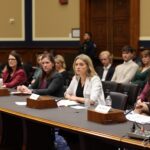Published February 2025
Madi grew up in a religious home, blessed with attentive parents who took the dangers of technology seriously. They installed filters on her devices and required her to hand in her phone every night. Yet, when she was thirteen, she encountered pornography for the first time through her social media feed. She probed further, finding ways around the parental controls. Before long, she was in the throes of a porn addiction that lasted for five years.
Madi’s story is hardly unique. It is the story of millions of American children, and of millions of American adults who encountered porn in adolescence and have carried the burdens of addiction into marriages, jobs, and churches—often with disastrous effects. Many stories have grimmer endings, observable in rising teen suicide rates, as boys are caught in sextortion scams and girls become targets of revenge porn and deepfakes. Pedophiles use social media to groom adolescents with exposure to pornography, and for some young people, saturated in porn from elementary school onward, OnlyFans looks like a promising career path.
Now nineteen and free of her addiction, Madi tells her story in order to help parents understand the prevalence of porn on the internet: “Kids are seeing [porn] if they’re on social media or have any internet access; there is almost no way that they are not seeing pornography at least once a week, [even] once a day.”
Click here to continue reading.
Clare Morell is a fellow at the Ethics and Public Policy Center, where she directs EPPC’s Technology and Human Flourishing Project. Prior to joining EPPC, Ms. Morell worked in both the White House Counsel’s Office and the Department of Justice, as well as in the private and non-profit sectors.


